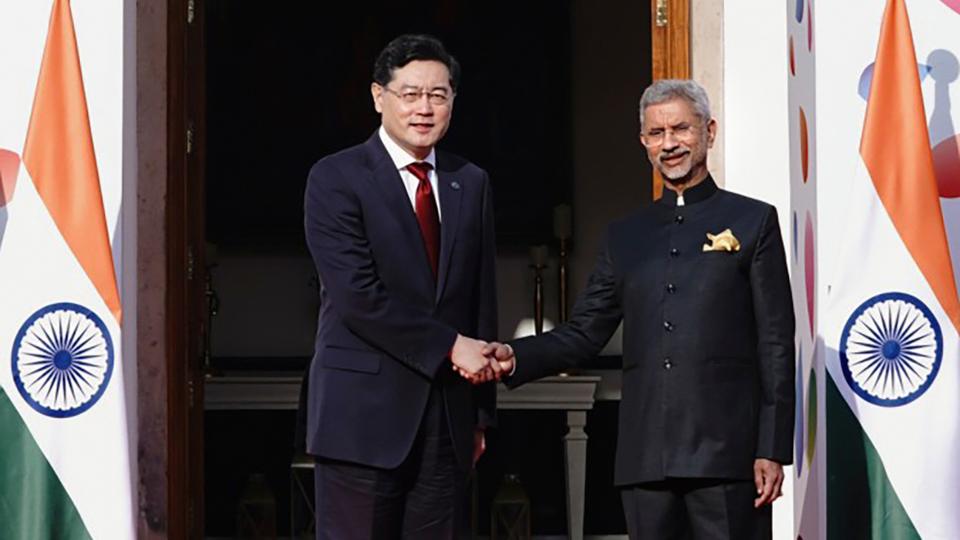Meeting between Indian Foreign Minister Subrahmanyam Jaishankar and his Chinese counterpart Qin Gang comes as their countries' militaries continue their standoff over a border dispute.
Indian foreign minister S. Jaishankar, right, welcomes his Chinese counterpart Qin Gang as the latter arrives for G20 foreign ministers meeting, in New Delhi on Thursday. (Indian Foreign Ministry / AP)
The foreign ministers of India and China have met on the sidelines of a gathering of top diplomats from the Group of 20 industrialised and developing nations in New Delhi, signalling a thawing of their relationship, which has been tense since the deadly 2020 border clashes in the Ladakh region.
India’s Foreign Minister Subrahma nyam Jaishankar said talks with his Chinese counterpart Qin Gang “focused on addressing current challenges to the bilateral relationship, especially peace and tranquillity in the border areas.”
Gang, who is in India for the G20 meeting, had unscheduled talks with Jaishankar a day after Chinese Foreign Ministry spokesperson Mao Ning said: “China attaches great importance to India.”
She added that maintaining good ties between the two countries is fundamental to their interests.The relationship between New Delhi and Beijing has deteriorated since 2020, when Indian and Chinese soldiers clashed on their land border in the Ladakh region, with 20 Indian and four Chinese soldiers killed.

Long-running standoff
The skirmish turned into a long-running standoff in the rugged mountainous area, where each side has stationed tens of thousands of military personnel backed by artillery, tanks and fighter jets.
The two militaries have been in a standoff since then and 17 rounds of talks between Indian and Chinese military commanders have failed to end it.
Since 2020, China has been building dozens of large weatherproof structures along the Line of Actual Control in eastern Ladakh for their troops to stay in during the winter.
New helipads, widened airstrips, new barracks, new surface-to-air missile sites and radar locations have also been reported by Indian media.
In February last year, both India and China withdrew troops from some locations on the northern and southern banks of Pangong Tso, Gogra and Galwan Valley in Ladakh. Both sides, however, continue to maintain extra troops as part of a multi-tier deployment.India says China occupies 38,000 square kilometres (15,000 square miles) of its territory in the Aksai Chin Plateau, which India considers part of Ladakh, where the current face-off is happening.
India and China fought a deadly war over the border in 1962.
Social media is bold.
Social media is young.
Social media raises questions.
Social media is not satisfied with an answer.
Social media looks at the big picture.
Social media is interested in every detail.
social media is curious.
Social media is free.
Social media is irreplaceable.
But never irrelevant.
Social media is you.
(With input from news agency language)
If you like this story, share it with a friend!

















0 Comments